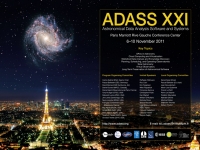Nanbo Peng (National Astronomical Observatories, Chinese Academy of Sciences), Yanxia Zhang (National Astronomical Observatories, Chinese Academy of Sciences)
Abstract
The development in highly parallel Graphics Processing Units
(GPUs) provides us a new method to solve advanced computation problems. We introduce an improved k-nearest neighbor (kNN) based on Nvidia’s Compute Unified Device Architecture (CUDA) platform for selection quasar candidate and redshift estimation. As the number of identified quasars becomes larger and more statistical significance, the performance of kNN for classification and regression raises rapidly. This method, however, takes a lot of computing time with large samples, because an unknown source needs to be calculated the distance with every known celestial object for choosing the closest training examples in the feature space. Using the data adopted from the Sloan Digital Sky Survey (SDSS) Data Release Seven (DR8), CUDA-accelerated kNN shows achieving greatly improved speedups over commonly used
kNN running on a single-core CPU. It achieves speedups of 30x and even more higher under some circumstances for our problems. This approach is effective and applicable for quasar selection and redshift estimation in order to compile an input catalogue for the Large Sky Area Multi-Object Fiber Spectroscopic Telescope (LAMOST).Paper ID: P113
Poster Instructions
|

